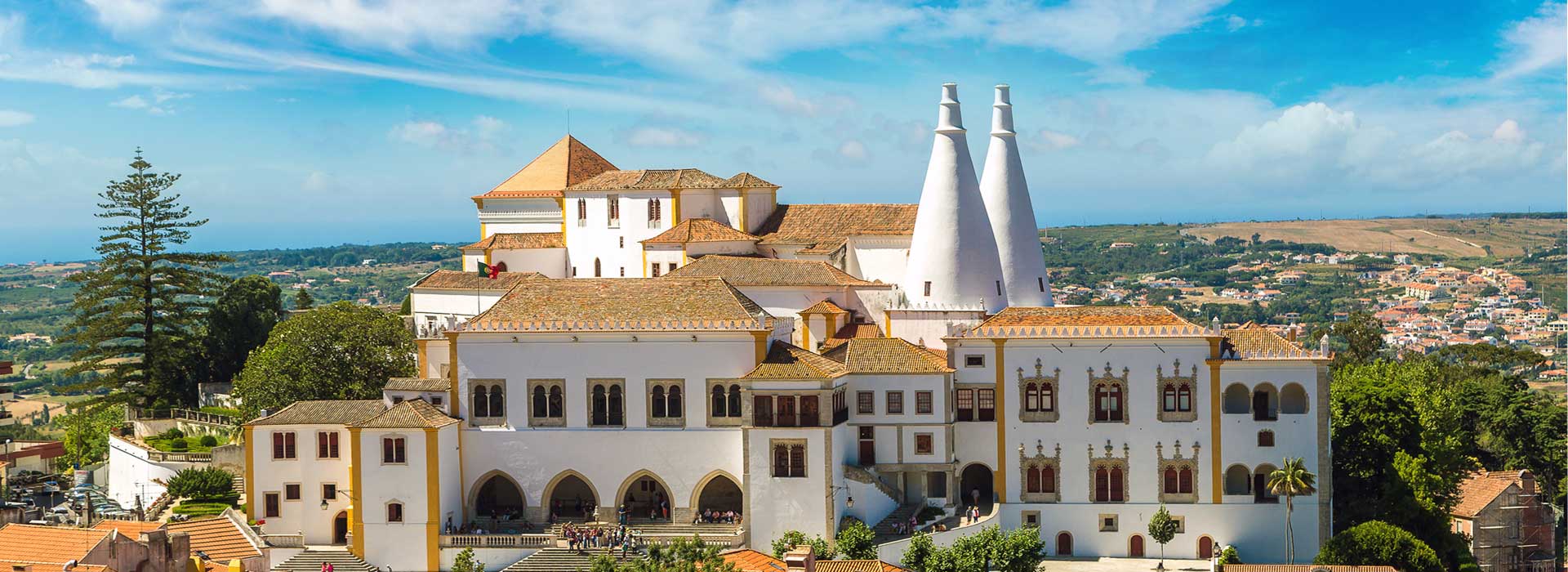
Discover the rich history of the National Palace, a landmark in the heart of Sintra's charming old town. With roots dating back to Moorish times, this architectural marvel captivates visitors with its fascinating origins. Let MADABOUTSINTRA.COM be your go-to guide for an unforgettable visit. Explore our comprehensive guides covering must-see attractions, top dining spots, accommodation options, and travel tips to make the most of your trip.
The Palace, adorned with iconic chimneys, serves as the focal point of Sintra, drawing visitors from far and wide. Dating back to before the era of Portugal's first Christian king, Dom Afonso Henriques, it has evolved over centuries, with notable additions by King Dinis, João I, and Manuel I. Despite its storied history, the Palace has retained its distinctive Moorish character, evident in its intricate wall tiles, charming courtyards, and ornate windows.
Experience the legacy of Portuguese architectural styles and cultural influences at the National Palace of Sintra, a testament to centuries of history and craftsmanship.
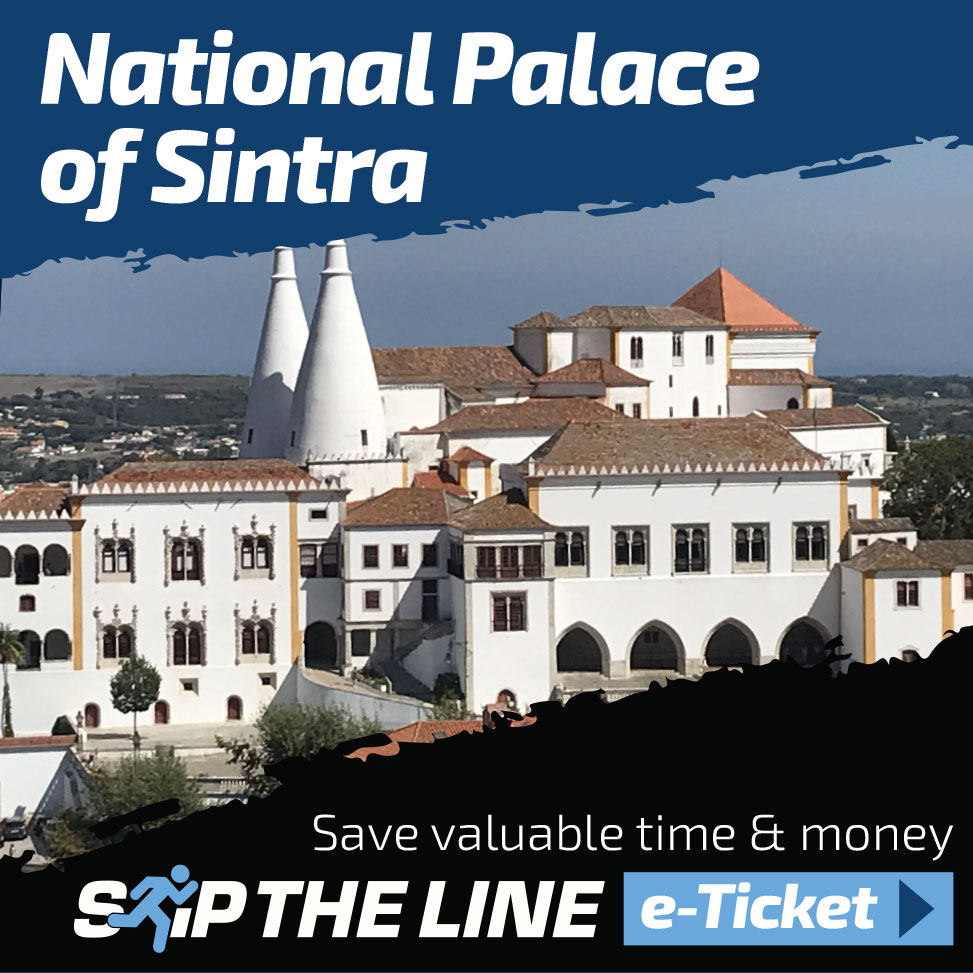
With this entrance ticket, you can gain entry to The National Palace of Sintra at your leisure. Buy online before you arrive to avoid queues and have the convenience of the e-ticket on your phone…
Book with confidence with the FREE CANCELLATION option.
• Kids under Five get in free, no ticket required
• If your plans change we have you covered with the option to cancel and get a full refund
Park, Daily: 09h30 – 18h30, (last admission 18h00)
Contact Details
2710-405 Sintra, Portugal.
38° 47' 50.5"N | 09° 23' 25.9" W | +351 219 237 300
info@parquesdesintra.pt | Website

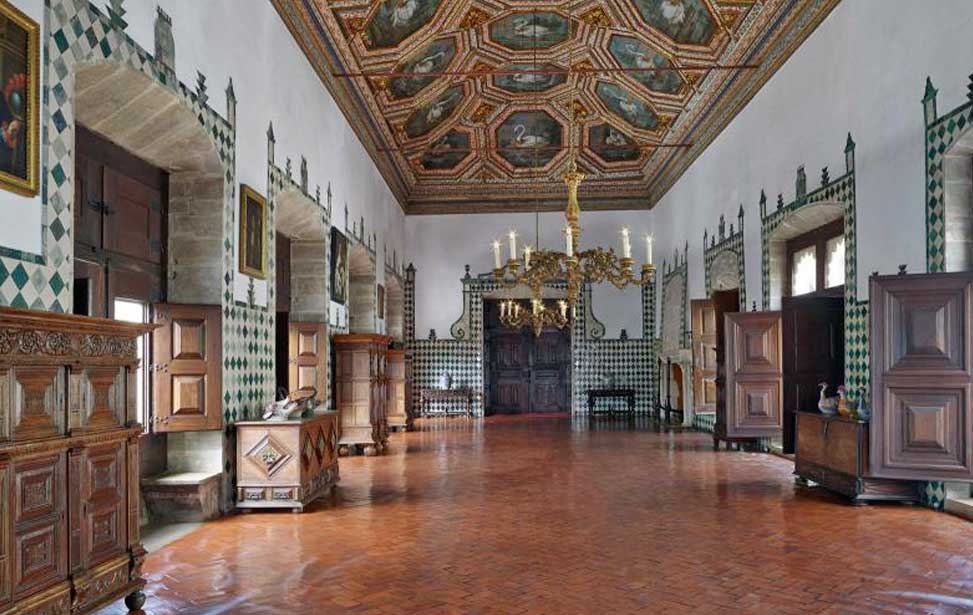
The Swan Room (Sala dos Cisnes)
In the 11th century, Arab geographer Al-Bakrî noted two formidable castles in Sintra: one overlooking the town and the other, the National Palace in its centre. Initially, the Palace served as the residence of the Almoravid governors of the Taifa of Lisbon. However, after the Christian conquest led by Alfonso Henriques in 1147, the Palace transitioned into Christian hands while Moorish artisans continued its upkeep.
Sintra, because of its proximity to Lisbon, pleasant climate, and excellent hunting grounds, became the preferred summer retreat for early Portuguese royalty. King Dinis, reigning from 1279 to 1325, further solidified this by relocating his private quarters to the Palace's highest room adjacent to the Palatine Chapel, which remains intact to this day.
Substantial transformations during the reign of King João I, starting in 1415, marked a period of significant expansion. Notable additions included the splendid Swan Room, adorned with painted swans on its Manueline-style ceiling, the Magpie Room featuring magpies holding the emblem "por bem" (for honour), and the Arab Room. The Palace's main façade, with its distinctive entrance arches, mullioned windows, and iconic conical chimneys, bears the imprint of King João's reign, blending Manueline and Moorish architectural styles.
During the reign of Dom Manuel I, spanning from 1497 to 1530, Portugal experienced its Age of Discovery, marked by significant building campaigns funded by the wealth amassed from expeditions. King Manuel spearheaded these efforts, giving rise to the distinctive Manueline architectural style. This innovative style, blending elements of Gothic, Renaissance, and Mudéjar influences, symbolised Portugal's newfound global prominence.
Under Dom Manuel's patronage, the construction of the Ala Manuelina (Manuel's Wing) commenced, featuring characteristic Manueline windows adorning the right side of the main façade. Additionally, the Coats-of-Arms Room (Sala dos Brasões) was erected between 1515 and 1518. This room boasts a stunning wooden coffered domed ceiling adorned with 72 coats of arms representing Portuguese noble families.

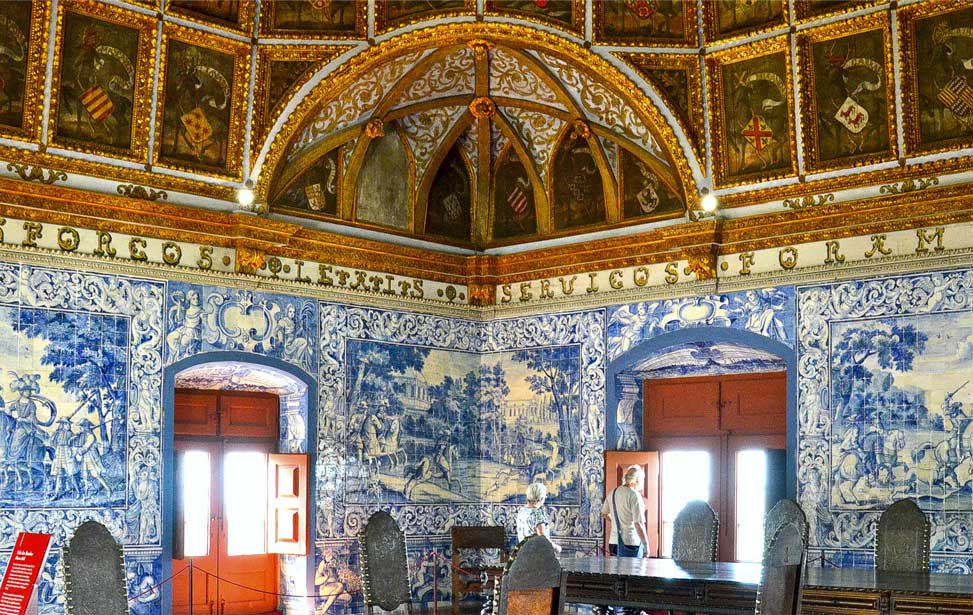
Sala dos Brasões
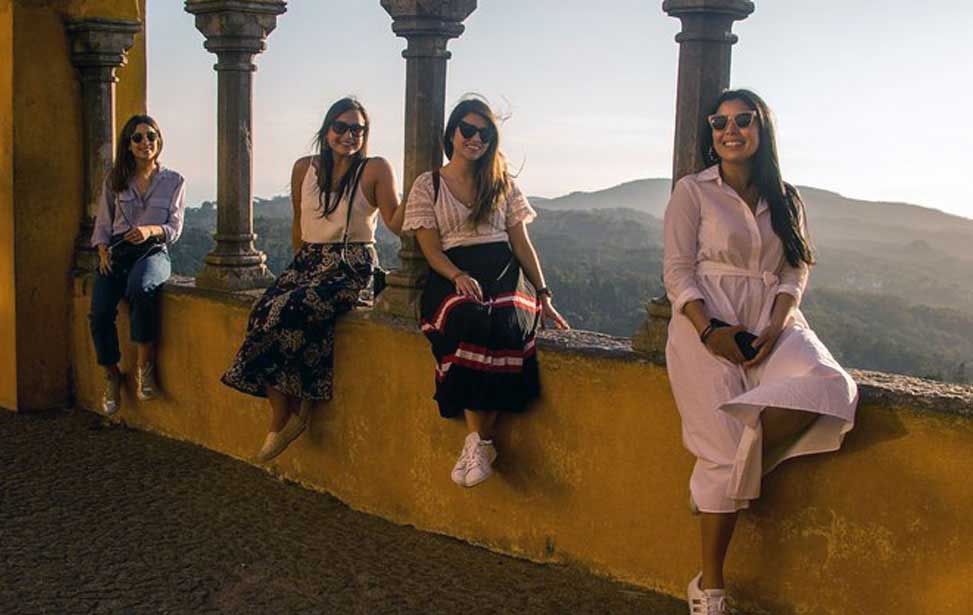
The tour will be a day trip where travellers can enjoy the different faces of Sintra. From the historic centre and the marvellous monuments to the coastline, where small villages are nestled between the rocks and the sea. The itinerary is designed in a way guests can visit the most popular spots. Discover the hidden treasures only the locals know of and taste the fantastic Portuguese cuisine. We will avoid crowds and your tour is 100% customisable.
Check Availability
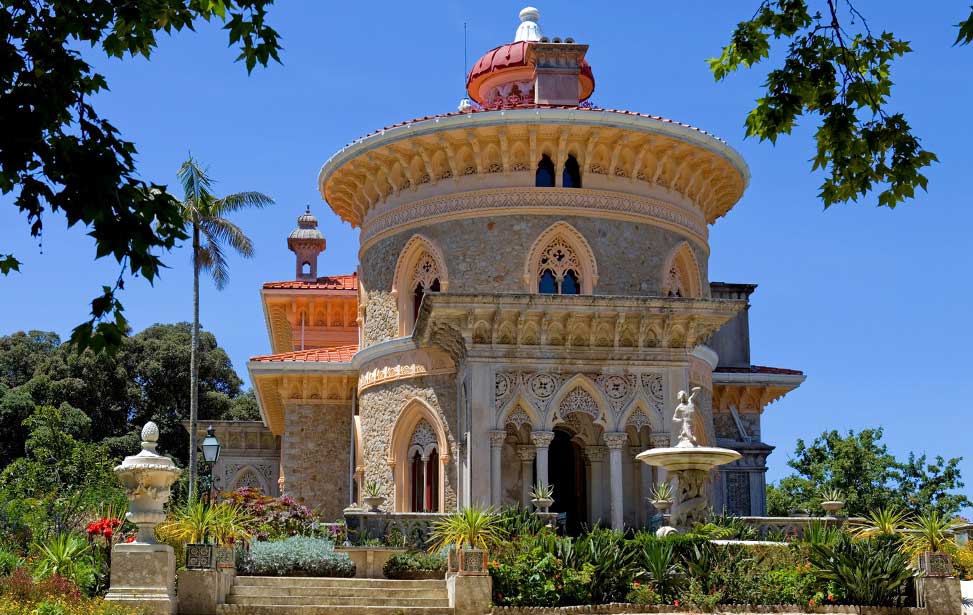
Walk the same steps as royalty through palaces and gardens on this full-day private guided tour of Sintra from Lisbon. Discover how aristocrats lived lavishly during the 19th century as you explore the UNESCO-listed town of Sintra and the lush surrounding landscapes. You will marvel at the combination of spectacular Romanticist style architecture and pristine gardens designed for Portuguese kings on this fantastic voyage.
Check Availability
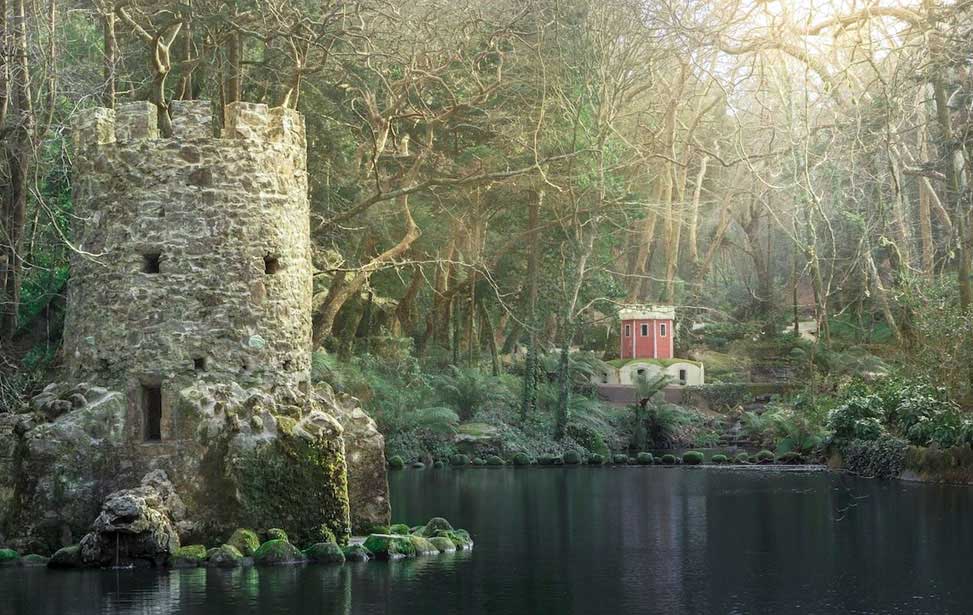
Departing directly from your accommodation, we will make a pleasant and completely private tour to the Romantic town of Sintra. Via the Cascais and Estoril Coast taking in along the way its culture, history, monuments and places of interest. Included in this tour are the tickets to the Jardim and Palácio da Pena, and regional wine tasting at the Colares Winery. You will be accompanied by an experienced guide and driver who will provide you with the necessary information. The tour takes at least 8 hours.
Check Availability
Throughout the centuries following its construction, the Palace underwent minimal changes until notable events unfolded. One significant occurrence was the imprisonment of King Afonso VI, afflicted with mental instability, by his brother Pedro II in 1676. Afonso remained confined within the Palace until his passing in 1683.
The destructive earthquake of 1755 caused the collapse of the tower over the Arab Room. Subsequently, in the late 18th century, Queen Maria I embarked on redecorating and redividing the rooms of the Ala Manuelina.
In the 19th century, Sintra emerged as a fashionable retreat for royalty, leading to renewed interest in the Palace. Queen Amélia, particularly enamored with the Palace, sketched numerous drawings of it. Following Portugal's transition to a Republic in 1910, the Palace attained national monument status. Architect Raul Lino spearheaded restoration efforts in the 1940s, aiming to restore its former grandeur by incorporating antique furniture from other palaces and refurbishing tile panels.
Since then, the National Sintra Palace has remained a significant historical attraction, drawing tourists from far and wide.
Opening Times
Daily: 09h30 - 18h30, (last admission at 18h00)
Save even more money with these popular combination tickets. Book with confidence with the FREE CANCELLATION option.
Adult: €10.00, Concessionary: €8.50
![]() Lisbon Card: 10% discount
Lisbon Card: 10% discount
|
Take the IC19 from Lisbon, IC30 from Mafra or EN9 turning off the A5 motorway to Cascais. | |
|
The Scotturb buses #434 & #435 leaves from Sintra Train station and takes you to the Old Town Sintra. |
Contact Details
2710-405 Sintra, Portugal.
38° 47' 50.5"N | 09° 23' 25.9" W | +351 219 237 300
info@parquesdesintra.pt | Website
|
There are a number of eateries in close proximity to the National Palace. | |
|
The are on-site public toilets. | |
|
Limited parking spaces in front of the Palace, likely to be full. Recommend using the carparks next to the Museu Anjos Teixeira lower down the hill. | |
|
Scheduled guided tours at 10h30 & 14h30. To book a private tour: info@parquesdesintra.pt | |
|
Due to a flight of steps at the main façade the accessible entranceway is by the kitchen at the side. Sign language trained staff, manual wheelchairs available on reservation, traction equipment for wheelchairs, ramps are implemented in certain rooms, adapted WC in the Manueline Room, 3D tactile models. |